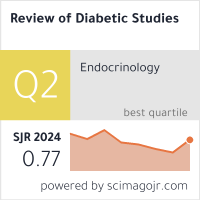Incidental Findings During Plain CT KUB (kidney, Ureter, Bladder)
DOI:
https://doi.org/10.70082/es59hd74Keywords:
Incidental Findings, Genitourinary, NECT KUB, Non-genitourinary, Gynecological, Gastrointestinal.Abstract
Background: To give a better elaboration of NECT KUB ability for the detection of incidental findings, rather than stones. Material and Method: A retrospective study was conducted on a Total of 200 patients undergoing NECT KUB, including both genders (male and female), with an age range of 20 to 79 years, to evaluate the detection of incidental findings during NECT KUB at King Abdulaziz Specialist Hospital in Ta'if City, KSA. From January until last of September, 2025, using a CT Siemens 128-slice scanner. Result: A retrospective analytical study was conducted on a total of 200 patients who underwent NECT KUB at KASSH, revealing that incidental findings were seen more frequently in male patients (125, 62.5%) than in female patients (75, 37.5%), with a male-to-female ratio of 1.6. Moreover, The most affected age group was 70 to 79, with 45 (22.5%), followed by 50 to 59 with 40 (20%), then 60 to 69 with 35(17.5%), 30 to 39 with 30 (15%) 40to 49 with 27(13.5%) and 20 to 29 with 23 (11.5%) and The incidental findings was classified into the genitourinary system 155 (77.5%%). The non-genitourinary system was involved in 35 cases (17.5%), and 10 cases had involvement in both, representing 5% of the study sample. The most frequent genitourinary finding was a renal cyst 25, which was followed by an Ectopic kidney with 10 cases, Pyelonephritis, atrophic kidney, and hydrocele were also observed in 5 cases. In contrast, the most common non-genitourinary finding was cholelithiasis (40), which was followed by Hernia (35). Appendicitis and diverticulosis, as well as pleural effusion, were all represented in 20% of the study sample. Mesenteric lymph nodes, ovarian cysts, fractures, and degenerative changes represented 10% of the study sample. Adnexal cysts accounted for 5%. Conclusion: The number of incidental findings detected by NECT during the KUB examination for possible kidney stones was significantly higher than that reported in other studies. NECT is an effective tool for identifying incidental findings and has a significant impact on how patients are managed.
Downloads
Published
Issue
Section
License

This work is licensed under a Creative Commons Attribution-ShareAlike 4.0 International License.


